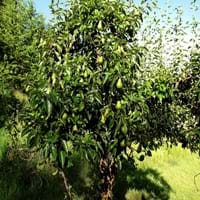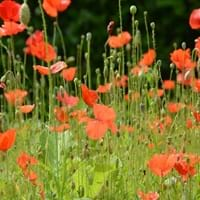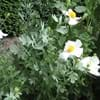Life Span
Perennial
Perennial
Type
Fruit
Flowering Plants
Origin
Europe, Western Asia
Alaska, Canada, Northern Europe, Russia/Siberia
Types
Green Anjou, Red Anjou, Bartlett
Not Available
Number of Varieties
Not Available
Habitat
Humid climates, moist forests
gardens, Grassland, Roadsides, tropical environments
USDA Hardiness Zone
3-8
2-7
Sunset Zone
2a, 2b, 3a, 3b, 4, 5, 6, 7, 8, 9, 14, 15, 16, 17, 18
A2, A3, 1a, 1b, 2a, 2b, 3a, 3b, 4, 5, 6, 10
Habit
Oval or Rounded
Upright/Erect
Minimum Height
Not Available
Minimum Width
Not Available
Flower Color
White
White, Yellow, Red, Orange, Pink, Coral
Flower Color Modifier
Not Available
Bicolor
Fruit Color
White, Yellow, Red, Green, Yellow green
Not Available
Leaf Color in Spring
Light Pink, Red, Green, Light Green
Blue Green, Gray Green
Leaf Color in Summer
Dark Green
Blue Green, Gray Green
Leaf Color in Fall
Purple, Dark Green, Burgundy
Blue Green, Gray Green
Leaf Color in Winter
Light Green
Not Available
Leaf Shape
Oval with a pointed tip and fine teeth along their edges
Egg-shaped
Plant Season
Early Spring, Winter
Spring, Summer, Winter
Sunlight
Full Sun
Full Sun
Type of Soil
Loamy, Sandy
Loam
The pH of Soil
Acidic
Acidic, Neutral
Soil Drainage
Well drained
Well drained
Bloom Time
Fall, Summer
Early Spring, Spring, Late Spring, Summer, Early Winter, Winter, Late Winter
Tolerances
Drought
Not Available
Where to Plant?
Ground
Container, Ground, Pot
How to Plant?
Grafting, Seedlings
Seedlings
Plant Maintenance
Low
Medium
Watering Requirements
Medium, Water less during winter, Water more in summer, when new, water every week
Form a Soil ring to water efficiently, Requires consistently moist soil, Requires regular watering, Water Deeply
In Summer
Lots of watering
Lots of watering
In Spring
Moderate
Moderate
In Winter
Average Water
Average Water
Soil pH
Not Available
Acidic, Neutral
Soil Type
Not Available
Loam
Soil Drainage Capacity
Not Available
Well drained
Sun Exposure
Full Sun, Partial Sun
Full Sun
Pruning
Remove damaged leaves, Remove dead branches, Remove dead leaves
Remove damaged leaves, Remove dead branches, Remove dead leaves, Requires very little pruning
Fertilizers
Ammonium Nitrate, Fertilize the soil before planting
10-15-10 amounts, All-Purpose Liquid Fertilizer
Pests and Diseases
Red blotch
Aphids, Verticillium Wilt
Plant Tolerance
Drought
Not Available
Flower Petal Number
Single
Single
Foliage Texture
Medium
Medium
Foliage Sheen
Glossy
Matte
Attracts
Aphids, Birds, Butterflies, Pear psylla
Not Available
Allergy
Anaphylaxis, Digestive Problems, Itchiness, Swelling
Skin irritation
Aesthetic Uses
Cottage Garden
Showy Purposes
Beauty Benefits
Good for skin, Improve skin tone, Making cosmetics, Moisturizing, Skin Problems
Not Available
Environmental Uses
Air purification, Shadow Tree
Air purification
Medicinal Uses
Cancer, Cardiovascular problems, cholesterol-lowering, Detox, Diabetes, Energy, Fiber, Heart problems, High blood pressure, Obesity, Treating diverticulosis, Weight loss
Not Available
Part of Plant Used
Bark, Fruits, Leaves
Flowers, Fruits
Other Uses
Used As Food
Culinary use, Employed in herbal medicine, Showy Purposes, Used as Ornamental plant
Used As Indoor Plant
No
Yes
Used As Outdoor Plant
Yes
Yes
Garden Design
Not Available
Alpine, Bedding Plant, Container, Mixed Border, Rock Garden / Wall, Wildflower
Botanical Name
PYRUS communis
PAPAVER nudicaule
Common Name
Pear
Iceland Poppy
In Hindi
नाशपाती
आइसलैंड पोस्ता
In German
Birne
Islandmohn
In French
Poire
pavot d'Islande
In Spanish
Pera
amapola de Islandia
In Greek
Αχλάδι
Ισλανδία παπαρούνας
In Portuguese
Pera
papoila de Islândia
In Polish
Gruszka
Iceland Poppy
In Latin
Orbis
Iceland Poppy
Phylum
Vascular plant
Magnoliophyta
Class
Magnoliopsida
Magnoliopsida
Order
Rosales
Ranunculales
Family
Rosaceae
Papaveraceae
Clade
Angiosperms, Eudicots, Rosids
Angiosperms, Eudicots
Tribe
Maleae
Not Available
Subfamily
Amygdaloideae
Paperveroideae
Season and Care of Pear and Iceland Poppy
Season and care of Pear and Iceland Poppy is important to know. While considering everything about Pear and Iceland Poppy Care, growing season is an essential factor. Pear season is Early Spring and Winter and Iceland Poppy season is Early Spring and Winter. The type of soil for Pear is Loamy, Sandy and for Iceland Poppy is Loam while the PH of soil for Pear is Acidic and for Iceland Poppy is Acidic, Neutral.
Pear and Iceland Poppy Physical Information
Pear and Iceland Poppy physical information is very important for comparison. Pear height is 1,219.20 cm and width 800.00 cm whereas Iceland Poppy height is Not Available and width Not Available. The color specification of Pear and Iceland Poppy are as follows:
Pear flower color: White
Pear leaf color: Light Pink and Red, Green, Light Green
Iceland Poppy flower color: White, Yellow, Red, Orange, Pink and Coral
- Iceland Poppy leaf color: Blue Green and Gray Green
Care of Pear and Iceland Poppy
Care of Pear and Iceland Poppy include pruning, fertilizers, watering etc. Pear pruning is done Remove damaged leaves, Remove dead branches and Remove dead leaves and Iceland Poppy pruning is done Remove damaged leaves, Remove dead branches, Remove dead leaves and Requires very little pruning. In summer Pear needs Lots of watering and in winter, it needs Average Water. Whereas, in summer Iceland Poppy needs Lots of watering and in winter, it needs Average Water.





